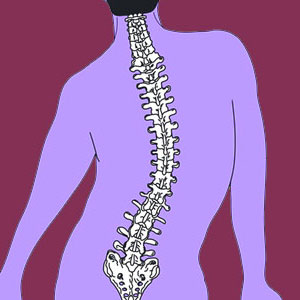
Dextroscoliosis describes atypical spinal curves that exist with the convex side of the curvature facing right, as well as being located to the right of the anatomical midline. Dextro variants of scoliosis are the most common type of side-to-side spinal curvature abnormality and can exist throughout the backbone, although they are found in some vertebral regions more frequently than in others.
Dextro type scoliosis is noted as being slightly less pathological than its left-facing counterpart, called levoscoliosis. However, most cases of scoliosis are not symptomatic, regardless of whether they are left inclined or right inclined. The decreased risk of pathology is only applicable during comparisons between very extreme examples of both scoliosis conditions.
This focused dialog explores and defines dextroscoliosis from an easy to understand point of view. We will contrast dextro varieties against levoscoliosis and provide some right-side curvature specific facts on the condition.
Dextroscoliosis Explained
The word prefix dextro is a Latin name signifying association with the right side. These specific types of curvatures include scoliosis where the convex side (bowed out) of the curvature is located past the midline of the dorsal anatomy and facing towards the right side of the body. This makes the concave (hollowed out) portion of the curvature face towards the left side of the body.
Additional diagnostic classification for right-facing spinal curvatures includes all of the following variants of dextroscoliosis: Idiopathic, degenerative, mesenchymal, functional (also known as nonstructural), fixed (also commonly called structural), developed (also called adult), adolescent, juvenile, infantile, congenital, cervical, cervicothoracic, cervicothoracolumbar, thoracic and thoracolumbar. Therefore, there are many variations of dextro type scoliosis that can be applied as diagnoses to individual case circumstances.
Dextro or Levo Types of Scoliosis
Dextro variants of scoliosis are more commonly observed clinically than levo varieties in most anatomical locations, with the exception of purely lumbar curvatures, where levoscoliosis tends to exist more often. Most thoracic, cervicothoracic and thoracolumbar curvatures follow the dextro inclination. Meanwhile, most cervicothoracolumbar (S-shaped) curvatures qualify to be called both dextro and levoscoliosis, since they contain at least 2 separate curvatures, often known as S curvature scoliosis or multiple scoliosis.
Dextroscoliosis is considered slightly less pathological statistically, since it tends to avoid the possibility of compressing the heart in the most extreme examples. Levoscoliosis, on the other hand can indeed affect the heart, necessitating drastic surgical intervention when it occurs in the thoracic region of the vertebral column. However, dextro variants can still influence thoracic kyphosis and entail vertebral rotation that might reposition the spine and ribcage forward into the anterior thoracic cavity or into the right side of the upper abdominal region. When these circumstances occur, there remains the possibility for right lung compression, liver compression, gall bladder compression or impingement on the intestines on the right anatomical side.
To learn more about the specific threats associated with dextroscoliosis, speak to your doctor or continue to read our section on the consequences of scoliosis for all possible resulting scenarios.
Scoliosis > Side to Side Spinal Curvature > Dextroscoliosis




